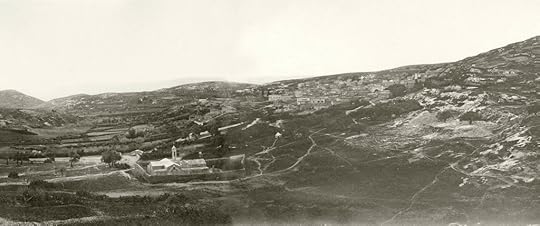C.L. Francisco's Blog, page 8
August 12, 2014
Author C. L. Francisco’s blog — home of Yeshua’s Cats!
July 24, 2014
Yeshua’s Cat Audiobook Giveaway!

Just click HERE and sign up for Mari’s Musings, the Yeshua’s Cat newsletter,
between now and August 25th, 2014,
and we’ll add your name to the giveaway pot.
Current newsletter subscribers will be included automatically.
Winners will be notified on August 27th, 2014.
.
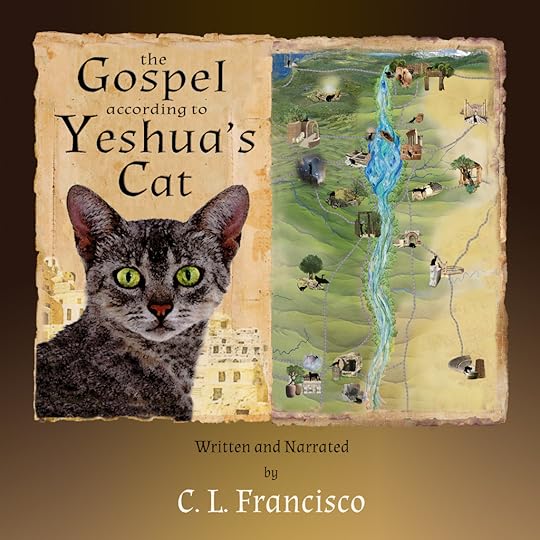
.
.
July 19, 2014
A Yeshua’s Cat Glossary K-V
This is the 3rd and last blog entry dedicated to clarifying lesser-known words and ideas from Yeshua’s Cat. This installment looks at words beginning with K-V. Scroll down to see the first two glossaries, with words A-J. As before, the numbers in parentheses indicate the page in the paperback edition where the word first appears. Let me know if I’ve overlooked anything!
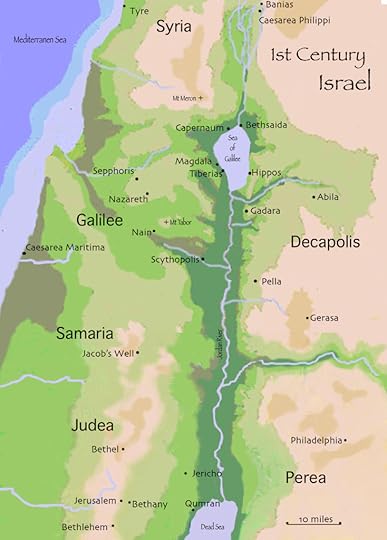
1st C Israel, map by C. L. Francisco

Photo by Avinoam Danin
* kanari berries (p. 83) The kanari berry comes from the Ziziphus spina christi tree, also known as the rimin or kanari tree, which is widespread throughout much of Israel. Kanari berries are slightly less than 1 inch in diameter, round and reddish, with a single large seed. The fruit is sweet when ripe and rich in vitamin C. Traditionally this tree has been considered the source of Jesus’ crown of thorns.
 * linen and spices (p. 66) This is a reference to the burial practices of ancient Israel, where the deceased’s body was wrapped in linen together with quantities of spices before being laid in a tomb.
* linen and spices (p. 66) This is a reference to the burial practices of ancient Israel, where the deceased’s body was wrapped in linen together with quantities of spices before being laid in a tomb.
 * Little Lamb (p. 66) This term as it appears in chapter 5:41 of Mark’s Gospel is spoken in the original Aramaic, “Talitha.” In Aramaic this was a term of endearment for a female child, from the Aramaic word taleh, for “lamb.” I used what was probably its familiar meaning in Aramaic—“little lamb.”
* Little Lamb (p. 66) This term as it appears in chapter 5:41 of Mark’s Gospel is spoken in the original Aramaic, “Talitha.” In Aramaic this was a term of endearment for a female child, from the Aramaic word taleh, for “lamb.” I used what was probably its familiar meaning in Aramaic—“little lamb.”
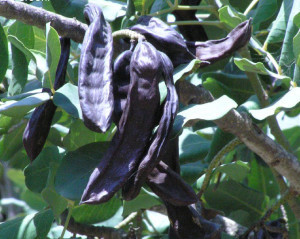 * locust pods (p. 83) Locust pods are the pods of the Ceratonia siliqua, or carob tree. Although both pods and seeds are rich in nutrients, in Jesus’ time they were scorned by the wealthy. It is these “husks” that were fed to the pigs in the parable of the Prodigal Son.
* locust pods (p. 83) Locust pods are the pods of the Ceratonia siliqua, or carob tree. Although both pods and seeds are rich in nutrients, in Jesus’ time they were scorned by the wealthy. It is these “husks” that were fed to the pigs in the parable of the Prodigal Son.
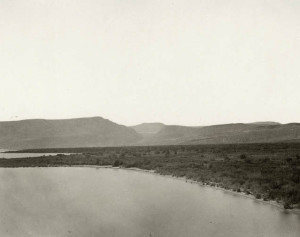
Looking across the shore of the Sea of Galilee where Magdala once stood
* Magdala (p. 100) Magdala, located midway up the western shore of the Sea of Galilee, was one of the most important towns in Galilee before Tiberius was built in 18 CE. Its fishing industry, fertile land, clear springs and strategic location at the intersection of several important roads made it a major center of commerce. Mary, Jesus’ disciple, was from Magdala.
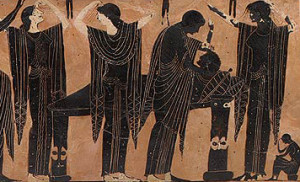 * mourning women (p. 64) In ancient Israel and much of the Ancient Near East, trained “wise” women provided public lamentation for the dead. They were hired particularly by wealthy families to express the depth of their grief. Through all levels of society, grief was predominantly expressed by women, both in the family and professionally. Hired mourners might be considered catalysts, helping others to express their grief freely.
* mourning women (p. 64) In ancient Israel and much of the Ancient Near East, trained “wise” women provided public lamentation for the dead. They were hired particularly by wealthy families to express the depth of their grief. Through all levels of society, grief was predominantly expressed by women, both in the family and professionally. Hired mourners might be considered catalysts, helping others to express their grief freely.
* Nazareth (p. 18) Nazareth was the hill-country village in central Galilee where Jesus grew up and his family continued to live.
* New Year (p. 74) see “Feast of Blowing of Trumpets”
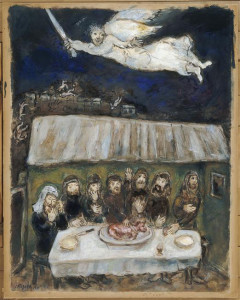
Marc Chagall’s “Passover”
* Passover (p. 218) Passover celebrates Israel’s deliverance from captivity in Egypt. It refers to the 10th of the plagues God visited on Egypt, in which the firstborn males of all Egyptian people and cattle were killed. Hebrews marked their doorposts with the blood of a freshly-killed lamb, so that the spirit of God would know to “pass over” their homes and spare their lives. Passover is also called the Feast of Unleavened Bread. Jews eat only unleavened bread during Passover to commemorate their sudden departure from Egypt, when they left so quickly that the bread had no time to rise. Passover was one of the three great pilgrimage festivals of Israel, when all who were able went to worship and make sacrifices at the Jerusalem Temple.
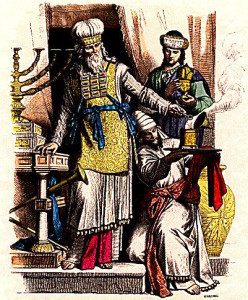 * priests (p. 139) Priests in the days of the Second Temple were primarily responsible for directing religious services, performing sacrifices, and mediating the blessing of God to the people. Unfortunately, political and financial pressure was often brought to bear on Temple priests, and not all resisted. Like any group, the priests of Jesus’ time included both godly and corrupt men, as well as merely ambitious men who closed their hearts to Jesus’ message in order to protect their own positions. Some opposed him for sincere reasons of their own, and some supported him.
* priests (p. 139) Priests in the days of the Second Temple were primarily responsible for directing religious services, performing sacrifices, and mediating the blessing of God to the people. Unfortunately, political and financial pressure was often brought to bear on Temple priests, and not all resisted. Like any group, the priests of Jesus’ time included both godly and corrupt men, as well as merely ambitious men who closed their hearts to Jesus’ message in order to protect their own positions. Some opposed him for sincere reasons of their own, and some supported him.
* rock rabbit (p. 10), see “conies”
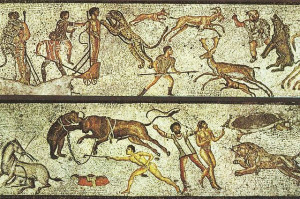
Mosaic of typical Roman Games
* Roman games (p. 40) James’ reference here was to the many trained and exotic animals imported into Roman cities to perform, fight, and be killed in coliseums for the entertainment of the populace.
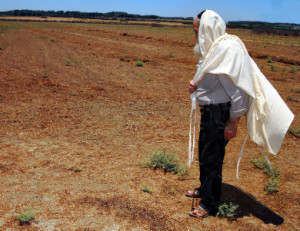 * sabbatical year (p. 74) The sabbatical year was one element of the law delivered by God to Moses on Mt. Sinai as a condition of the Hebrews’ occupation of the Promised Land. The sabbatical law required that every seventh year fields should lie fallow, and no harvests should be gathered, whether in the fields, groves or vineyards. Any food the land produced was free to all comers, to take as needed, but not to harvest and store. Personal debts due during the sabbatical year were also forgiven.
* sabbatical year (p. 74) The sabbatical year was one element of the law delivered by God to Moses on Mt. Sinai as a condition of the Hebrews’ occupation of the Promised Land. The sabbatical law required that every seventh year fields should lie fallow, and no harvests should be gathered, whether in the fields, groves or vineyards. Any food the land produced was free to all comers, to take as needed, but not to harvest and store. Personal debts due during the sabbatical year were also forgiven.
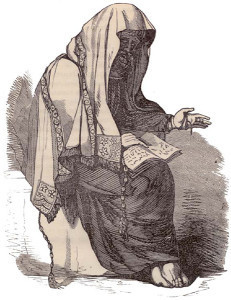 * scribes and scholars (p. 139) Scribes and scholars are essentially the same here, men who studied and interpreted Jewish law—lawyers and judges. Jesus’ radical interpretation of the law, not to mention his claim to have authority over it, threatened the whole institution of Jewish law as they knew it. Over the years since the Jews’ return from Babylonian captivity, concern with following the minutiae of the law had increased dramatically, and a complex hierarchy of religious power and influence had evolved, with all the financial benefits such a system implied.
* scribes and scholars (p. 139) Scribes and scholars are essentially the same here, men who studied and interpreted Jewish law—lawyers and judges. Jesus’ radical interpretation of the law, not to mention his claim to have authority over it, threatened the whole institution of Jewish law as they knew it. Over the years since the Jews’ return from Babylonian captivity, concern with following the minutiae of the law had increased dramatically, and a complex hierarchy of religious power and influence had evolved, with all the financial benefits such a system implied.
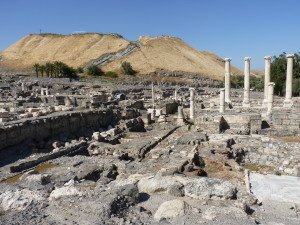
Scythopolis, photo Ricardo Tulio Gandelman
* Scythopolis (p. 81) Scythopolis was a Greco-Roman city founded by Ptolemaic Greeks below the hill of the abandoned biblical city Beth-Shean. Scythopolis was the only city of the Decapolis to be located on the west bank of the Jordan River.
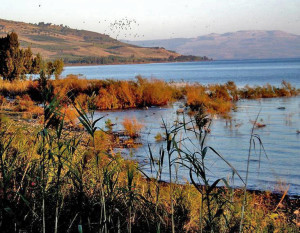 * Sea of Galilee (p. 24) The Sea of Galilee is a large landlocked body of water more properly termed a lake, located roughly midway down the Jordan River’s flow. It is also known as the Lake or Sea of Gennesaret, Lake Tiberias, and Lake Kinneret. In Jesus’ time it supported a thriving fishing industry, as well as having Galilee’s capital city, Tiberias, located on its western shore. The Sea of Galilee has always been subject to sudden violent winds and wind-driven waves, especially at night.
* Sea of Galilee (p. 24) The Sea of Galilee is a large landlocked body of water more properly termed a lake, located roughly midway down the Jordan River’s flow. It is also known as the Lake or Sea of Gennesaret, Lake Tiberias, and Lake Kinneret. In Jesus’ time it supported a thriving fishing industry, as well as having Galilee’s capital city, Tiberias, located on its western shore. The Sea of Galilee has always been subject to sudden violent winds and wind-driven waves, especially at night.
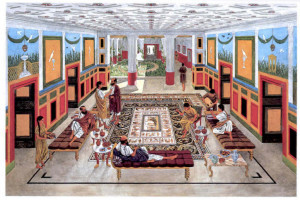
Artist’s reconstruction of a villa in rebuilt Sepphoris
* Sepphoris (p. 45) Sepphoris was the Romanized capital of Galilee before Antipas built the city of Tiberias. Around the time of Herod the Great’s death it had been all but razed to the ground by Galilean rebels and then by Roman troops in reprisal. Only five miles from Nazareth, it was rebuilt as a model of Greco-Roman beauty during the years when Jesus was growing up.
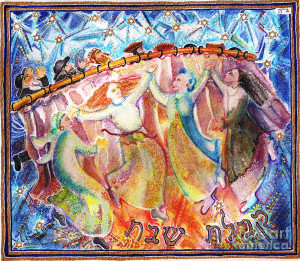
“Kabbalat Shabbat Jerusalem,” by Chana Helen Rosenberg
* Shabbat (p. 34) In Jewish tradition the Shabbat was the week’s day of rest, set aside and made holy by God, when all labor was forbidden. Over time extremely detailed interpretations of what was and was not “labor” developed. Jesus was critical of this mass of legal minutiae that obscured the true purpose of the day: taking time to rest from hard labor and worship God.
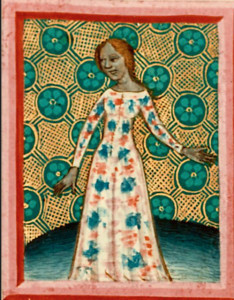
“The Shulamite,” from a medieval manuscript
* Shulamite (p. 5) The Shulamite woman mentioned in Song of Songs 6:13, is generally thought to be the bride who speaks and is spoken of throughout the Song of Songs. She is described as “black and comely.”
 * snake fish (p. 130) The “snake” fish that Mari mentions was probably a catfish, a species common in the Sea of Galilee, but considered unclean because it had no scales and thus resembled a snake more than a fish (“Anything living in the water that does not have fins and scales is to be detestable to you.” Lev 11:12). Apparently this same association of catfish with snakes was common among a variety of ancient Mesopotamian and Arabic peoples.
* snake fish (p. 130) The “snake” fish that Mari mentions was probably a catfish, a species common in the Sea of Galilee, but considered unclean because it had no scales and thus resembled a snake more than a fish (“Anything living in the water that does not have fins and scales is to be detestable to you.” Lev 11:12). Apparently this same association of catfish with snakes was common among a variety of ancient Mesopotamian and Arabic peoples.
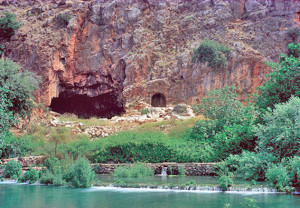 * springs of the Descender (p. 195) The Jordan River has four main sources flowing from the mountains near the junction of Israel, Jordan and Syria. The easternmost of these sources is the spring above Banias, or Caesarea Philippi.
* springs of the Descender (p. 195) The Jordan River has four main sources flowing from the mountains near the junction of Israel, Jordan and Syria. The easternmost of these sources is the spring above Banias, or Caesarea Philippi.
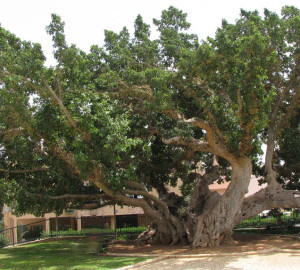 * sycamore fig (p. 210) The sycamore fig (ficus sycamorus) is a large tree common to low-lying areas of Israel, often growing as high as sixty feet. Its fruit is edible, but only if each fig is slashed approximately three days before harvesting.
* sycamore fig (p. 210) The sycamore fig (ficus sycamorus) is a large tree common to low-lying areas of Israel, often growing as high as sixty feet. Its fruit is edible, but only if each fig is slashed approximately three days before harvesting.
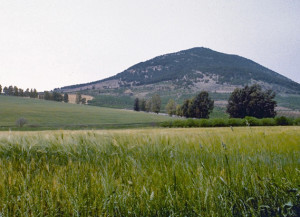 * Tabor (p. 69) Mt. Tabor (approximately 2000 feet in elevation) is a forested mountain in southern Galilee, located at the eastern end of the Jezreel Valley.
* Tabor (p. 69) Mt. Tabor (approximately 2000 feet in elevation) is a forested mountain in southern Galilee, located at the eastern end of the Jezreel Valley.
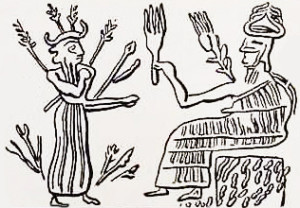
Ancient Mesopotamian seal with Tammuz standing before the Grain Goddess
* Tammuz (p. 167) Tammuz (or Dumuzi) was a Mesopotamian god who was the husband of the goddess Ishtar (or Inanna). His worship extended across most of the ancient Near East. As a manifestation of rising and dying vegetation, his death was mourned every summer at the height of the summer heat and drought. His new birth was celebrated with the spring rains. Both his goddess wife and the women of the region lamented the death of the beloved god who represented the familiar roles any man might play: lover, husband, brother, and son.
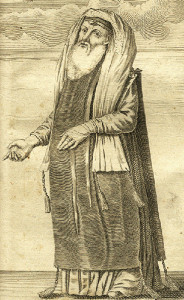 * teachers (p. 41) “Teachers” is the word I chose to represent the men known as “Pharisees” in many New Testament passages. This word emphasizes their role as educators in the individual houses of prayer, as well as the many things they had in common with Jesus, rather than the negative associations the word “Pharisee” inspires. Jesus was not always critical of Pharisees, nor were they a homogeneous group.
* teachers (p. 41) “Teachers” is the word I chose to represent the men known as “Pharisees” in many New Testament passages. This word emphasizes their role as educators in the individual houses of prayer, as well as the many things they had in common with Jesus, rather than the negative associations the word “Pharisee” inspires. Jesus was not always critical of Pharisees, nor were they a homogeneous group.
* Ten Cities (p. 155), see “Decapolis”
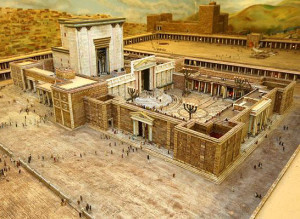 * Temple (p. 8) The Temple of Jesus’ time was Herod’s Temple, completed in 19 BCE (except for outbuildings and details). The Jerusalem Temple was at the heart of Israel’s religious life; it was there that sacrifices were offered and priests led the people in worship. Herod’s Temple was actually a reconstruction of the Second Temple, completed in 516 BCE after the Babylonian exile. Solomon’s Temple was the first temple, built early in the 1st millennium BCE, and destroyed by Nebuchadnezzar II in 587.
* Temple (p. 8) The Temple of Jesus’ time was Herod’s Temple, completed in 19 BCE (except for outbuildings and details). The Jerusalem Temple was at the heart of Israel’s religious life; it was there that sacrifices were offered and priests led the people in worship. Herod’s Temple was actually a reconstruction of the Second Temple, completed in 516 BCE after the Babylonian exile. Solomon’s Temple was the first temple, built early in the 1st millennium BCE, and destroyed by Nebuchadnezzar II in 587.
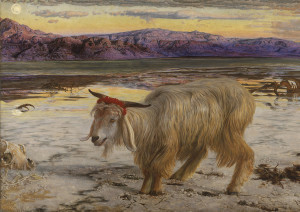
“The Scapegoat,” by Wm Holman Hunt
* Temple scapegoat (p. 75) The term “scapegoat” comes from an ancient Hebrew tradition, begun during the Exodus, when, on the Day of Atonement, the high priest laid the sins of Israel on the head of a goat and drove the goat out into the wilderness to die, thus removing Israel’s sins from their midst. In later years the goat was killed once he was well away from the city, perhaps to prevent him returning again with his burden of sin.
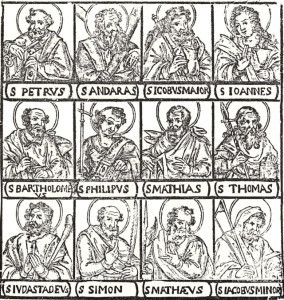 * the Twelve (p. 136) “The Twelve” was a common name for the twelve apostles chosen by Jesus as his special companions.
* the Twelve (p. 136) “The Twelve” was a common name for the twelve apostles chosen by Jesus as his special companions.
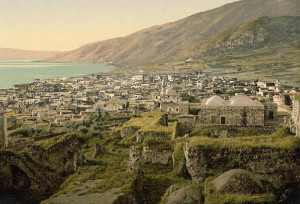 * Tiberias (p. 119) Tiberias was Galilee’s capital city, founded in 20 CE by Herod Antipas to replace Sepphoris. Unfortunately much of the city was built on the site of an old cemetery, and many Jews refused to live there. In the end, Antipas bribed people to relocate to Tiberias. It became a thriving city in time, replacing Magdala as the foremost urban trading center on the west shore of the Sea of Galilee.
* Tiberias (p. 119) Tiberias was Galilee’s capital city, founded in 20 CE by Herod Antipas to replace Sepphoris. Unfortunately much of the city was built on the site of an old cemetery, and many Jews refused to live there. In the end, Antipas bribed people to relocate to Tiberias. It became a thriving city in time, replacing Magdala as the foremost urban trading center on the west shore of the Sea of Galilee.
* Village of Nahum (p. 29), see “Capernaum”
.

.
.
July 15, 2014
Release date set for A Cat Out of Egypt!
A Cat Out of Egypt, magical prequel to Yeshua’s Cat, is scheduled for release October 15th!
Join the child Yeshua and his temple cat Miw
for a breathtaking race across the Egyptian desert,
pitting their faith against a deadly evil of the ancient world!
Editing and formatting of A Cat Out of Egypt are complete, and If all goes well, Egypt will go live on Amazon on October 15th, both in paperback and Kindle formats. The narrative has come in at 70,500 words: approximately 40 pages longer than Yeshua’s Cat (not counting the glossary and explanation of illustrations).
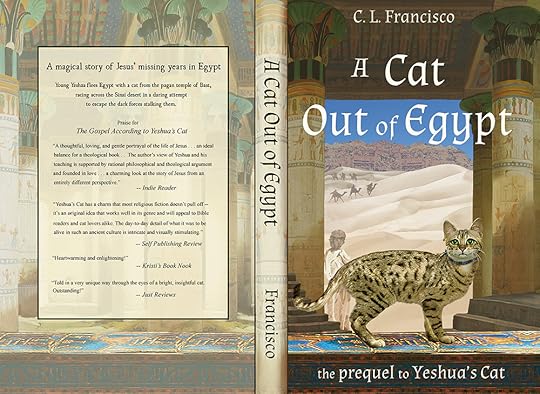
The cover design is the work of the author, based partially on a painting of the temple of Isis at Philae by the 19th C artist David Roberts. The line drawings opening each chapter are sketches of Egyptian artifacts, also by the author.
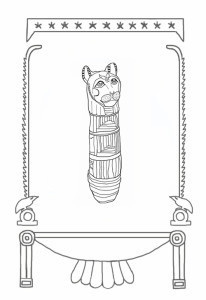
Cat mummy from Ptolemaic/Roman period
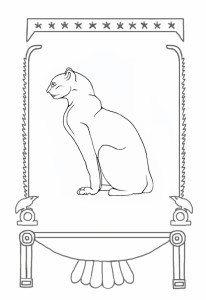
Glazed terracotta cat, Ptolemaic period
Take a look at the sample pages for the opening chapters!
.
.
July 1, 2014
Yeshua’s Cat Glossary
Click the button below to go there!
.
.
June 28, 2014
A Yeshua’s Cat Glossary F-J
This is the 2nd blog entry dedicated to clarifying lesser-known words and ideas from Yeshua’s Cat. This installment looks at words beginning with F-J. Scroll down to see the first glossary, with words A-D. As before, the numbers in parentheses indicate the page in the paperback edition where the word first appears. Let me know if I’ve overlooked anything!

1st C Israel, map by C. L. Francisco
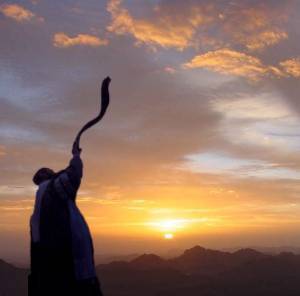 * Feast of the Blowing of Trumpets (p. 62) The “feast of the blowing of trumpets,” or “the day of blowing the horn,” is one of the major feasts of Israel’s holy year, better known today as Rosh Hashanah, or “beginning of the year.” Originally it was begun with the blowing of rams’ horns in the Temple to call the people to contemplate their sins and repent before the 10 “days of awe” were completed on Yom Kippur, and God’s verdict was sealed.
* Feast of the Blowing of Trumpets (p. 62) The “feast of the blowing of trumpets,” or “the day of blowing the horn,” is one of the major feasts of Israel’s holy year, better known today as Rosh Hashanah, or “beginning of the year.” Originally it was begun with the blowing of rams’ horns in the Temple to call the people to contemplate their sins and repent before the 10 “days of awe” were completed on Yom Kippur, and God’s verdict was sealed.
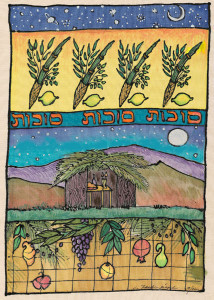
Art by Pomegranate Studios
* Festival of Booths, or Sukkot (p. 81) Sukkot was originally one of 3 great Jerusalem pilgrimage festivals. It had its roots in Israel’s celebration of the harvest, and took place at the beginning of the rainy season. Above all, the week was a time of rejoicing, and of remembering God’s care for Israel during the years of her wandering in the wilderness and living in tents, or booths. Before the first and holiest day of Sukkot, which came five days after Yom Kippur, each family built a small booth, where they lived together during the festival. Sacrifices of animals and grain continued throughout the week. The Illumination of the Temple reminded the people of the pillar of fire that had guided them in the wilderness, and the Pouring of the Water was both prayer and thanks for the coming of the rains. Sukkot also celebrated the beginning of the New Year, when the past year’s mistakes had been wiped away, and all the world was made new.
 * Festival of Lights (p. 123) “Festival of Lights” is another name given to Hanukkah (the Hebrew word for “consecration,” or “dedication”) by the ancient Jewish historian Josephus. Hanukkah celebrated the reconsecration of the Temple in Jerusalem during the Maccabean revolt against the Seleucid empire, when the Temple was cleansed of the pagan desecrations of Antiochus Epiphanes. The Festival of Lights celebrates the eight days during which a single day’s worth of consecrated oil burned on the outer altar for a full eight days, the time necessary to prepare a new quantity of consecrated olive oil. Above all, Hanukkah is a time of joy and celebration, of feasting and praising God.
* Festival of Lights (p. 123) “Festival of Lights” is another name given to Hanukkah (the Hebrew word for “consecration,” or “dedication”) by the ancient Jewish historian Josephus. Hanukkah celebrated the reconsecration of the Temple in Jerusalem during the Maccabean revolt against the Seleucid empire, when the Temple was cleansed of the pagan desecrations of Antiochus Epiphanes. The Festival of Lights celebrates the eight days during which a single day’s worth of consecrated oil burned on the outer altar for a full eight days, the time necessary to prepare a new quantity of consecrated olive oil. Above all, Hanukkah is a time of joy and celebration, of feasting and praising God.
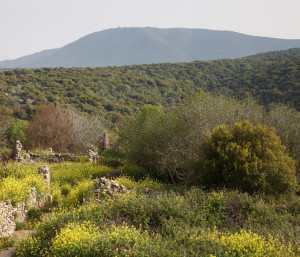 * Galilee (p. 17) Galilee comprises the northern interior of Israel on the west side of the Jordan River. In the time of Jesus it was a primarily rural area beginning in the mountains north of Samaria overlooking the Plain of Megiddo and reaching into the northern mountains toward the borders of Syria. The Mediterranean coast was not considered to be part of Galilee.
* Galilee (p. 17) Galilee comprises the northern interior of Israel on the west side of the Jordan River. In the time of Jesus it was a primarily rural area beginning in the mountains north of Samaria overlooking the Plain of Megiddo and reaching into the northern mountains toward the borders of Syria. The Mediterranean coast was not considered to be part of Galilee.
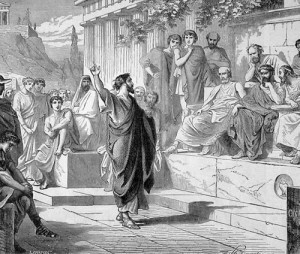
Paul’s sermon to the Gentiles
* Gentile (p. 158) “Gentile” is derived from the Latin word gentilis, meaning “clan” or “tribe”. It has been used since some of the earliest translations of Hebrew and Greek scriptures to translate the Hebrew word goyim and the Greek word ethnos (both literally, “peoples,” “nations”) when the intent was specifically non-Jewish people or nations. Today the word is used almost exclusively in this way. The word “gentile” itself did not originally have this sense, just as the words goyim and ethnos are also more broad.
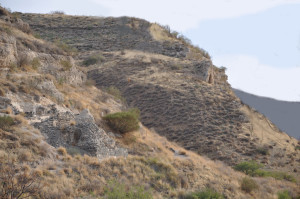 * Gergesenes (p. 112) One of several names referring to the people on the eastern shore of the Sea of Galilee where Jesus cured the demoniac who lived among the tombs, resulting in a herd of pigs drowning themselves in the lake. No one is quite sure where this event took place. The country of the Gadarenes (from Gadara), the Gerasenes (from Gerasa) and Gergesenes (from Gergasa) are all possibilities, and each occurs in some early documents. All are located east of the Jordan, although the best-known cities with the names Gadara and Gerasa are not on the shores of the Sea of Galilee, but further south and east. Their influence in surrounding areas may have been extensive, however, resulting in the use of their names for people living on the eastern shore of Sea of Galilee.
* Gergesenes (p. 112) One of several names referring to the people on the eastern shore of the Sea of Galilee where Jesus cured the demoniac who lived among the tombs, resulting in a herd of pigs drowning themselves in the lake. No one is quite sure where this event took place. The country of the Gadarenes (from Gadara), the Gerasenes (from Gerasa) and Gergesenes (from Gergasa) are all possibilities, and each occurs in some early documents. All are located east of the Jordan, although the best-known cities with the names Gadara and Gerasa are not on the shores of the Sea of Galilee, but further south and east. Their influence in surrounding areas may have been extensive, however, resulting in the use of their names for people living on the eastern shore of Sea of Galilee.
* God’s anointed (p. 8) See “chosen”
* harlot of the Amorite abyss (p. 9) See also “Amorite.” The “harlot of the Amorite abyss” refers to a goddess common to many Ancient Near Eastern cultures, who became characterized over time as abyss or chaos (see the origin of the Hebrew word tehom). The ancient Sumerian goddess Tiamat, “mother of all life,” was associated with salt water, and is probably the best known example of these goddesses. The ancient city of Mari, for which Yeshua named the cat (“lady of beauty and wrath, mother of life”), was named for the sea (mari/mare/mar), the origin of all life. Since ancient Jews considered pagan goddesses to be characterized above all by forbidden fertility rites, the evil spirit speaking to Yeshua called Mari a cat named after the “harlot of the Amorite abyss.”
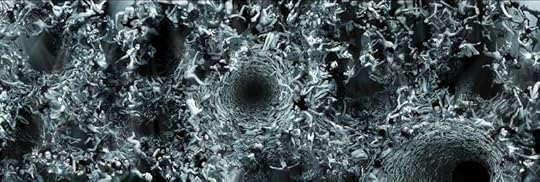
“Tehom,” contemporary artist Angelo Musco’s interpretation of the primeval abyss
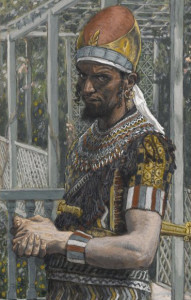
Herod Antipas, by James Tissot
* Herod Antipas (p. 19) There were two principal rulers named “Herod” in Jesus’ life. The first one mentioned in Yeshua’s Cat was Herod Antipas (born before 20 BCE and died sometime after 39 CE). Herod Antipas was Herod the Great’s youngest son, and tetrarch of Galilee and Perea after his father’s death. Jesus called him the “fox.” He is best known today as the New Testament Herod who killed John the Baptist and presided over part of Jesus’ trial. Antipas’ marriage to his sister-in-law and niece Herodias (incest according to Jewish law) resulted in John’s vocal condemnations of Antipas’ behavior. Antipas arrested John and eventually had him beheaded as a favor to his step-daughter after she pleased him with a dance. Like his father, Antipas was an ambitious builder. He rebuilt the Galilean capital of Sepphoris after its destruction in a Galilean uprising, and later built the city of Tiberius on the western shore of the Sea of Galilee as his new capital.
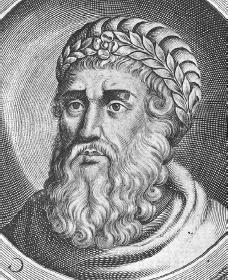 * Herod the Great – (p. 30) Herod the Great was the ruler of Judea under the Romans from 37/36 BCE until his death, probably in 4 BCE. He was the son of an Idumaean father and a Nabataean mother, who converted to Judaism under the Maccabees; because he was not born a Jew–and because of his cruel and immoral excesses–his commitment to the Jewish faith was often questioned. He was king when Jesus was born, and was responsible for the slaughter of the innocents at Bethlehem. It was after his death that Joseph was told in a dream that Jesus could return safely from Egypt. Herod was responsible for a major expansion of the 2nd Temple in Jerusalem and for many other ambitious building projects. Scholars throughout history have questioned his sanity. His sons were also called Herod, which can cause confusion: ie, Herod Antipas, Herod Archelaus, Herod Phillip, etc.
* Herod the Great – (p. 30) Herod the Great was the ruler of Judea under the Romans from 37/36 BCE until his death, probably in 4 BCE. He was the son of an Idumaean father and a Nabataean mother, who converted to Judaism under the Maccabees; because he was not born a Jew–and because of his cruel and immoral excesses–his commitment to the Jewish faith was often questioned. He was king when Jesus was born, and was responsible for the slaughter of the innocents at Bethlehem. It was after his death that Joseph was told in a dream that Jesus could return safely from Egypt. Herod was responsible for a major expansion of the 2nd Temple in Jerusalem and for many other ambitious building projects. Scholars throughout history have questioned his sanity. His sons were also called Herod, which can cause confusion: ie, Herod Antipas, Herod Archelaus, Herod Phillip, etc.
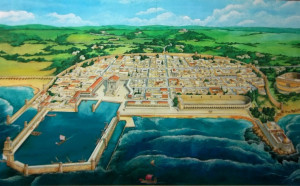
Photo rallimuseums.com
* Herod’s breakwaters (p. 30) This is a reference to one of Herod the Great’s most ambitious building projects: the construction of an artificial harbor at Caesarea Maritima on the Mediterranean coast between the years 25-10 BCE. Craftsmen and masons were drawn from many areas during its construction. Keturah’s husband died in an accident there.
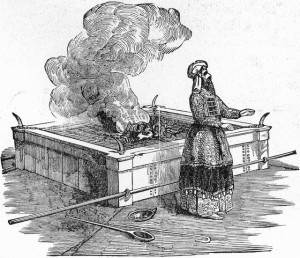 * holocaust (p. 8) “Holocaust” is a word derived from the Greek holocaustos, which described a sacrifice entirely consumed by fire. It was used in the Septuagint as a translation of the Hebrew word olah, or “burnt offering.” It refers to the sacrifice of a whole animal, flayed and burnt on an altar. The skin was removed before burning.
* holocaust (p. 8) “Holocaust” is a word derived from the Greek holocaustos, which described a sacrifice entirely consumed by fire. It was used in the Septuagint as a translation of the Hebrew word olah, or “burnt offering.” It refers to the sacrifice of a whole animal, flayed and burnt on an altar. The skin was removed before burning.
* holy one of God (p. 42) See “chosen.”
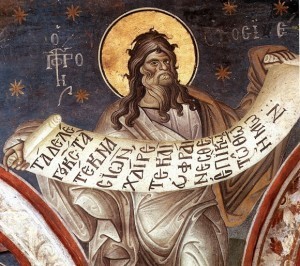 * Hosea (p. 89) A prophet in 8th C BCE Israel, best known for his marriage to the prostitute, and later unfaithful wife, Gomer, as a symbolic expression of God’s steadfast commitment to Israel in spite of her faithless following after other gods. Hosea’s prophecies are full of warnings of doom, but also of promised forgiveness.
* Hosea (p. 89) A prophet in 8th C BCE Israel, best known for his marriage to the prostitute, and later unfaithful wife, Gomer, as a symbolic expression of God’s steadfast commitment to Israel in spite of her faithless following after other gods. Hosea’s prophecies are full of warnings of doom, but also of promised forgiveness.
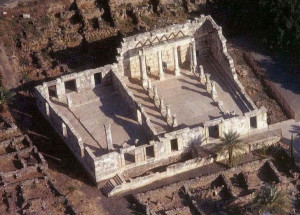
Wadi Qelt Synagogue, 1st C BCE, Jericho
* house of prayer (p. 41) “House of prayer” is the term used in Yeshua’s Cat instead of synagogue, from the Greek synagoge, which was not in common use in Jesus’ time. In the 1st C CE the Hebrew term was bet-k’neset, “house of gathering.” The Greek word was proseukhē, “house of prayer.”
* House of the Poor (p. 87) See “Bethany.”
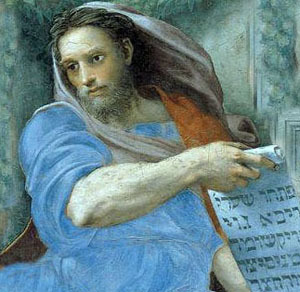
Raphael’s Prophet Isaiah
* Isaiah (p. 89) The prophet Isaiah lived in Israel during the 8th C BCE, and his prophecies have much to do with Israel’s enemies the Assyrians, and their eventual defeat by Israel. Most scholars believe that there are at least two major contributors to the book of Isaiah, the second almost 200 years after the original prophet lived. It is this second Isaiah who wrote many of the best-known prophecies of the coming messiah, such as “the suffering servant” passages. Yeshua is referring to a passage by the earlier prophet here, in which Isaiah described the hoped-for paradisal age of the messiah.
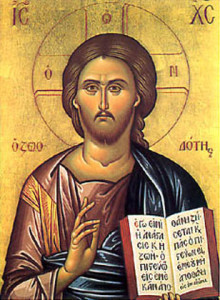 * James, Yeshua’s brother (p. 19) Because of the doctrine of Mary’s perpetual virginity, the Roman Catholic Church does not accept the possibility of Jesus’ having had any brothers or sisters, in spite of apparent references to to them in the Gospels. James is mentioned as Jesus’ brother both in the scriptures and by several early historians. He is commonly called James the Just, and was the leader of the Church at Jerusalem.
* James, Yeshua’s brother (p. 19) Because of the doctrine of Mary’s perpetual virginity, the Roman Catholic Church does not accept the possibility of Jesus’ having had any brothers or sisters, in spite of apparent references to to them in the Gospels. James is mentioned as Jesus’ brother both in the scriptures and by several early historians. He is commonly called James the Just, and was the leader of the Church at Jerusalem.
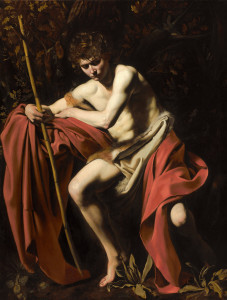
Caravaggio’s John the Baptist
* John, Yeshua’s cousin (p. 14) This is John the Baptist, who was preaching repentance and baptism for the forgiveness of sins before Jesus began his public ministry. He appears in the gospels as the one who came to prepare the way for Jesus. The Gospel of Luke is the only book that suggests a family connection between Jesus and John, and many scholars doubt its accuracy. John is best-known for baptizing Jesus and for the manner of his own death. Imprisoned by Herod Antipas, whom John had condemned for marrying his brother’s wife Herodias, John was beheaded as a favor to Salome, Herodias’ daughter and Herod’s stepdaughter, after she pleased him with a dance.
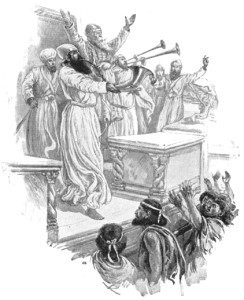 * Jubilee Year (p. 75) The Jubilee Year came every 49/50 years–the 7th sabbatical year (see sabbatical year). Like the sabbatical years, the land lay fallow in the Jubilee Year, but most uniquely, Jewish slaves were freed, and land was restored to its original owners. The book of Leviticus mandates observance of the Jubilee. Some scholars believe that these rules were originally part of the observance of every sabbatical year. Whenever the practice of the Jubilee Year actually began, it is clear that by Jesus’ time, Israel’s observance of it had been interrupted by a succession of foreign overlords. It is possible that the Jubilee would have fallen during the years of Jesus’ ministry, although it would not have been observed.
* Jubilee Year (p. 75) The Jubilee Year came every 49/50 years–the 7th sabbatical year (see sabbatical year). Like the sabbatical years, the land lay fallow in the Jubilee Year, but most uniquely, Jewish slaves were freed, and land was restored to its original owners. The book of Leviticus mandates observance of the Jubilee. Some scholars believe that these rules were originally part of the observance of every sabbatical year. Whenever the practice of the Jubilee Year actually began, it is clear that by Jesus’ time, Israel’s observance of it had been interrupted by a succession of foreign overlords. It is possible that the Jubilee would have fallen during the years of Jesus’ ministry, although it would not have been observed.
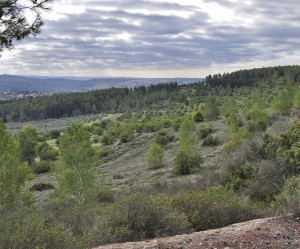 *Judea (p. 15) Judea was the name of the mountainous area west of the Jordan River reaching to the Mediterranean, south of Samaria, and north of Idumea. The name came originally from the tribe of Judah, which was granted much of the same area after the Exodus. In King David’s time (11th C BCE) Jerusalem was established as the capital of the Kingdom of Judah. The kingdom survived until its conquest by Babylon in 597 BCE, after which it was ruled by a variety of larger empires. In Jesus’ time it was a province of Rome.
*Judea (p. 15) Judea was the name of the mountainous area west of the Jordan River reaching to the Mediterranean, south of Samaria, and north of Idumea. The name came originally from the tribe of Judah, which was granted much of the same area after the Exodus. In King David’s time (11th C BCE) Jerusalem was established as the capital of the Kingdom of Judah. The kingdom survived until its conquest by Babylon in 597 BCE, after which it was ruled by a variety of larger empires. In Jesus’ time it was a province of Rome.
.
.
June 19, 2014
Yeshua’s Cat the Audiobook!
FInally, after months of breathless waiting, the audiobook of
The Gospel According to Yeshua’s Cat is available for purchase and/or download!
Buy it now at Amazon-Audible and iTunes.
.
Yeshua’s Cat the Audiobook is an unabridged version of the original book, narrated by the author, C.L. Francisco. The listening time is 6 hours and 7 minutes. It is available only in English. Buy one today!
.
.
Yeshua’s Cat the Audiobook!
Finally, after months of breathless waiting, the audiobook of The Gospel According to Yeshua’s Cat is available for purchase and/or download! Buy it now at Amazon-Audible and iTunes.
Yeshua’s Cat the Audiobook is an unabridged version of the original book, narrated by the author, C.L. Francisco. The listening time is 6 hours and 7 minutes. It is available only in English. Buy one today!
June 15, 2014
A Yeshua’s Cat Glossary
A recent reviewer commented that there were many terms and concepts in Yeshua’s Cat that were unfamiliar to a non-Christian, or even to a casual churchgoer. I apologize to my readers! I hadn’t really sat down and thought about it. I tried to avoid “God-talk” and gob-stoppers, but it’s always hard for someone who’s spent much of her life in university libraries to realize where common knowledge and academia part ways.
So here’s the first installment, A-D, of a list of words and concepts that might be strange to some readers. If I missed one that you would like to see included, please let me know, and I’ll add it in.
The parentheses after each word indicate the first page in the printed book where the word/concept appears. A simple map of 1st-century Israel is included below.
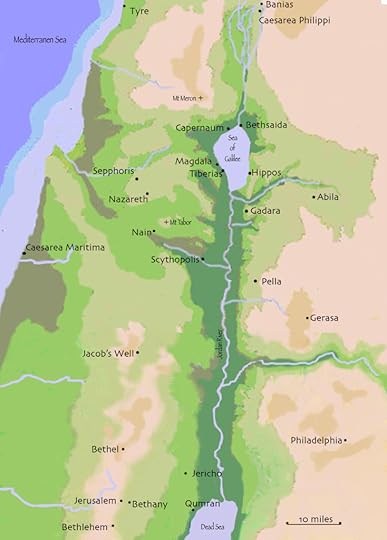
1st C. Israel, map C.L.Francisco
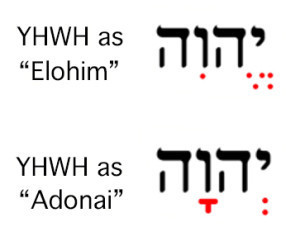
Hebrew name of God
* Adonai Elohim (p. 8) Whole books have been written on this phrase alone! It’s Hebrew, literally translated as “Lord God.” Adonai is generally translated as “lord,” or “master,” although it has ancient roots meaning “father” as well. Elohim is the plural form of the Hebrew word el, meaning “god.” I’m not going to get into the arguments about why it’s plural; it’s a very ancient form. In Jewish tradition, either the word Adonai or Elohim was spoken aloud whenever the scripture text included the name of God, YHWH. If you know anything about Hebrew, you’ll know that originally the written form had no vowels, only consonants. Later, vowels were added to the text as tiny dots and lines. When these later texts included the name YHWH, they inserted the vowel points used in the words Adonai or Elohim to remind readers never to speak the actual name of God aloud.
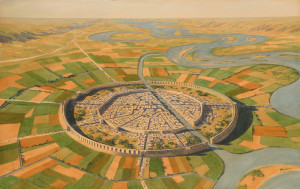
Artist’s Reconstruction of Mari, photo from Cielotech Online
* Amorite (p. 9) “People of the West,” or “people of (the god) Amurru,” a term originally referring to an ancient nomadic group found in Mesopotamia, Syria, and Palestine during the 3rd millennium BCE. Like most of the early peoples in the Ancient Near East, their origins are unclear; they may have come originally from Syria. They settled in Mesopotamia and assimilated its culture, eventually becoming the dominant ethnic group from about 2000 to 1600 BCE; they were probably responsible for the downfall of the ancient Sumerian civilization known as Ur III. They set up a number of Amorite kingdoms, among them the thriving city-state of Mari, and most importantly, Babylon. The great Babylonian king Hammurabi was an Amorite. By the time Joshua and the Israelites entered Canaan, the Amorites were living in the area around and north of the Dead Sea on both sides of the Jordan River, including the mountains of Judea and the area later known as the Decapolis. Their great cities had long since fallen into ruins. Some scholars believe that the patriarch Abraham’s roots were Amorite, but by the time of the Exodus, the two peoples no longer recognized any kinship: Joshua’s armies slaughtered great numbers of Amorites in the conquest of Canaan. By the time of the Greek and Roman empires, Jews had come to view the Amorites as a people contaminated by the worst excesses of superstition and pagan witchcraft.
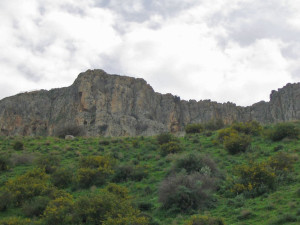
Arbel Cliffs
* Arbel cliffs (p. 23) The Arbel cliffs rose approximately 1200 feet above the biblical town of Magdala, on the western side of the Sea of Galilee. A major north-south caravan route ran beneath them along the shores of the Sea of Galilee, and another major road ran west between the cliffs toward Sepphoris and Nazareth along the course of the Arbel Stream. The cliffs were riddled with caves, used at various times by smugglers and bandits, and also by Jewish refugees and rebels. They were best-known in Jesus’ time for Herod the Great’s campaign against the Jewish rebels hiding in the caves in 40 BCE, when soldiers were lowered down the cliff face in baskets to kill the rebels and their families. The Arbel caves were used again during the 1st C CE Jewish uprising against the Romans that resulted in the burning of Jerusalem.
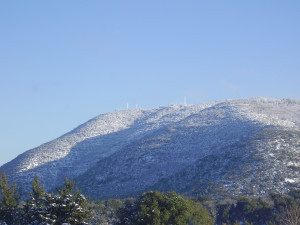
Mt. Meron, photo netanel h.
* barren expanse of rock (p. 200) The chapter and scene to which these words apply are references to an event called the “Transfiguration.” This was an event in the Gospels when Peter, James, and John shared a mountaintop vision of Jesus in which he was filled with light, and accompanied by Moses and the prophet Elijah. Since no particular mountain is mentioned, people have many ideas about where it might have taken place. Mt. Tabor, Mt. Horeb, Mt. Hermon and Mt. Meron have all been suggested. I decided that Mt. Meron fitted into the story best, so that’s the area I described in the book. According to the Gospels, Jesus had just left Caesarea Philippi, or Banias, just before the Transfiguration, and Mt. Meron is the highest mountain on the general route back toward the Sea of Galilee. It rises approximately 4,000 feet above sea level, roughly ten miles northwest of the northern shore of the Sea of Galilee.
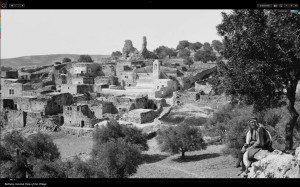
Bethany in the 19th century
* Bethany (p. 90) A small town to the east of Jerusalem where Jesus’ good friends Mary, Martha, and Lazarus lived. There is some disagreement about how the name “Bethany” should be translated. “House of figs” was one possibility, but I decided to go with the translation “house of the poor/poverty/affliction,” or “poor-house,” which is the translation most scholars choose. I identified Lazarus’ community as one of the Essene hospices, which were located in several areas in Israel.
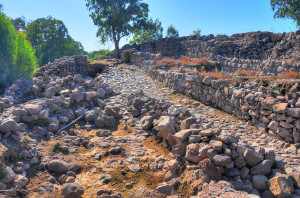
Cobbled street in Bethsaida, photo by biblewalks.com
* Bethsaida (p. 39) A small fishing village north of Capernaum on the very north end of the Sea of Galilee, on the east side of the Jordan River. Its exact location was long uncertain, since the most likely ruins lay some distance from the shore of the Sea of Galilee, perhaps because of changes in water levels over the centuries. Recent excavations have been able to identify the site more exactly. The Gospels say that the apostles Peter, Andrew, and Philip—and possibly James and John—came from this village.
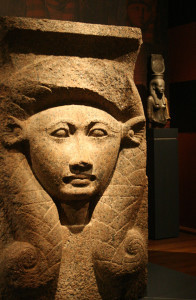
Hathor column capital from Bubastis, photo Nicholson CR
* Bubastian (p. 88) Relating to the Egyptian city of Bubastis, or Per Bast (“House of Bast”), where northern Egypt’s largest and most important temple to the goddess Bast was located. Bast, or Bastet, was a lion/cat goddess associated with fertility, joy, birth, death, and the rising sun. Over time she merged with the warrior goddess Sekhmet, and shared characteristics with Hathor and Isis. The Old Testament prophet Ezekiel mentions Bubastis (Ezek 30:17) when he prophesies the doom awaiting Egypt in the day of the Lord. He probably singled out Bubastis because of the licentious reputation of its annual festival.
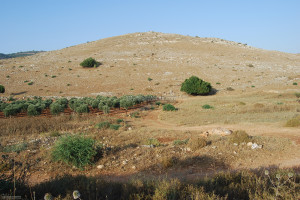
Possible site of biblical Cana, photo biblewalks.com
* Cana (p. 45) A small town in the hills of Galilee near Nazareth and Sepphoris. Its exact location is uncertain, although scholars have suggested several possible sites. Cana is best known for the wedding Jesus attended there, where he changed water into wine.
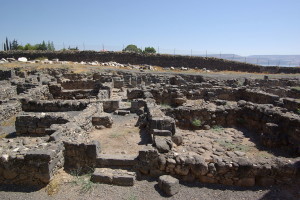
Ruins of Capernaum, photo Bertold Werner
* Capernaum (p. 25) Literally, “Village of Nahum,” a fishing village on the northwest shore of the Sea of Galilee, first occupied in the 2nd century BCE. The village was built largely of volcanic rock, which gave it a dark appearance. A small house traditionally believed to belong to the Apostle Simon Peter is located there. Jesus lived in Capernaum during his early Galilean ministry.
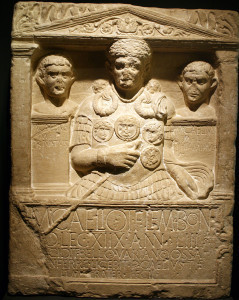
Monument to Centurion Marcus Caelius, 1st C CE
* centurion (p. 147) A Roman officer commanding a group of 100 men, which in Latin was called a century. Unlike the higher officers, centurions were usually regular enlisted men who had served for approximately 20 years and risen through the ranks.
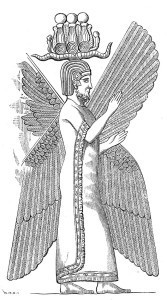
Relief of Cyrus the Great
* chosen (p. 9) In contemporary English Bibles this word is generally used to translate the Hebrew word “anointed.” It has a variety of biblical applications, but it always means favored or singled out by God for a special task or role. It was used of Abraham, David, and Jesus, as well as for the pagan ruler Cyrus the Great who released the Jews from their Babylonian captivity, and many others. It was also used of the people of Israel as a group and the community of Christians. The sense in which 1st C Jews used it often referred to a promised leader (messiah) who would deliver Israel from her enemies.
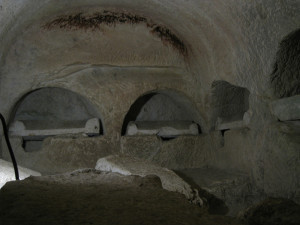
Temporary tombs at Beit Shearim
* charnel house (p. 123) Technically a charnel house is a building where the bones of the dead are stored after the flesh has been removed by any of a variety of means, including temporary burial. In a less specific sense it describes any place contaminated by the decomposition of human bodies. In ancient Israel burial was generally temporary: when the body had decayed in its stone tomb, the bones were transferred to a charnel pile, and the tomb reused. But for close to a hundred years, up until the destruction of Jerusalem in 70 CE, Jews around the Jerusalem area began burying bones in individual stone boxes called ossuraries.
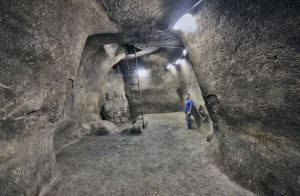
A very large Jerusalem cistern from the 10th C BCE
* cistern (p. 38) An underground water storage area, carved out of solid rock, and generally sealed with a layer of lime to prevent leakage. In countries like Israel, where rain fell mostly in the winter months, rain water was funneled along gutters into cisterns for summer use. Small cisterns were commonly dug for individual dwellings, and large ones for community use. Their small openings were usually covered with lids, and water was drawn from them as from wells.
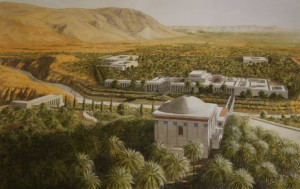
Herod’s Winter Palace Jericho, image by Archaeology Illustrated
* city near Mari’s home (p. 205) Yeshua found Mari on the western side of the Jordan (Descender) when he was on his way from his baptism by John to the desert where he spent 40 days fasting and praying. Thus the city near her home would have been Jericho.
* cohort (p. 147) A unit of ancient Roman armies made up of six centuries, or 600 men. The centurion whose servant Jesus healed would have commanded one of the centuries assigned to the local cohort.

A coney, or rock hyrax
* conies (p. 117) One of the English words used to translate the ancient Hebrew word which literally means “the hider.” The animal to which this word referred is probably the rock hyrax, a small furry beast living in dry rocky areas and related to the elephant (!).

Artist’s reconstruction of a villa in rebuilt Sepphoris
* crucifixions at Sepphoris (p. 234) When Herod the Great died in 4 BCE, a number of rebellions broke out across Palestine, among them one led by Judas the Galilean, who captured Sepphoris, a Romanized town five miles from Nazareth. The Roman general Varus retaliated quickly, sacking the city and killing or enslaving as many as 30,000 local people suspected of participating in the uprising. The leaders were crucified, and their bodies left for carrion beasts. Josephus called the rebuilt city “the ornament of all Galilee.”
* Day of Atonement (p. 74) Day of Atonement is a translation of the Hebrew Yom Kippur, also known as the Sabbath of Sabbaths, the holiest day of the Jewish year, observed on the tenth day of the month of Tishrei. Yom Kippur is a day of strict fasting and rest. Starting at sunset on the day before, devout Jews spend the day in public and private prayer, confessing their sins against God, and begging for forgiveness. At the end of the day, they believe their sins to have been forgiven. The observance of Yom Kippur is mandated in one of the books of the Torah, Leviticus.

Scythopolis, photo Ricardo Tulio Gandelman
* Decapolis (p. 154) Decapolis meant literally “ten cities” in Greek, and referred to a loosely knit group of ancient cities in what is now Israel, Jordan, and Syria. No one can say for sure which cities were included in the ten–or even if there were exactly ten–since their relationship was never formalized in Greek or Roman law. As best we know, they were independent cities, each established as a polis, or city-state, with its own local sphere of influence. They supported each other because of their common ties of culture, similar economic interests, and commitment to the Greek, and later, Roman, empires. With the construction of Roman roads they became even more closely interconnected: outposts of the Roman Empire on its furthest eastern edges, islands of Greco-Roman speech and culture, determinedly set apart from the Aramaean, Nabataean, and Jewish populations all around them. Eight cities included in most lists were Gerasa, Scythopolis (or Beit-Shean), Hippos, Gadara, Pella, Philadelphia, Capitolias, and Abila.
* defiled hands (p. 150) This phrase refers to ancient Jewish concepts of purity and cleanliness. Ritual purity concerned the complex process of appearing before God in a pure state—which means (grossly simplified) not being contaminated by anything remotely related to death or pagan religion. Washing hands before eating was one of the lesser applications of the laws meant to insure that people were worthy to stand before God.
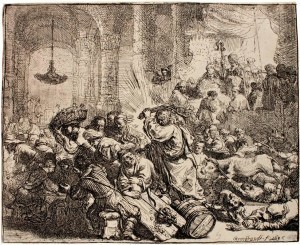
Rembrandt etching of Christ Driving the Money-Changers from the Temple
* den of thieves (p. 225) Mari eavesdropped here on Yeshua’s “cleansing of the temple,” which occurred when he entered the temple and found the outer courts filled with money changers’ tables and sellers of animals intended for sacrifice. (Foreign money could not be used for offerings in the temple because it generally had “graven images” on it: it had to be “changed” for Jewish coins.) Yeshua’s point was that such activities had no place in the courts of the temple itself. His words were drawn from the writings of the prophets Isaiah and Jeremiah.
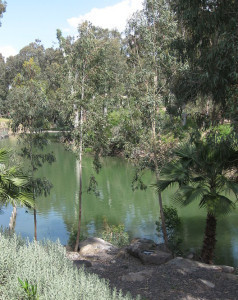
The Descender, photo Deror avi
* Descender (p. 14) This is the actual meaning of the Hebrew word yarden, which is usually transliterated as “Jordan” River. This is what speakers of Hebrew would have understood when the river’s name was spoken. People have speculated that the name derived from the great distance the river traveled in altitude in a short time, from its springs in the foothills of Mt. Hermon to the depths of the Dead Sea.
.
.
.
June 1, 2014
Of time and faith
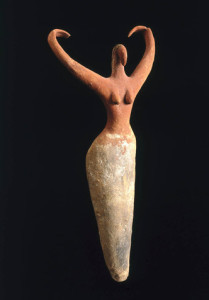
Pre-Dynastic Egypt
My recent immersion in ancient Egyptian art (for A Cat Out of Egypt) has reminded me of the many hours I’ve spent roaming happily through the art of the Ancient Near East–as far back in human history as the Stone Age years (roughly 50,000 to 10,000 BCE). Just in surveying the history of Egypt, I’ve traveled through so many cultures so quickly that thoughts on the nature of cultural change have finally stopped me in my tracks. So today I want to share with you some of my wandering thoughts on time, change, and Western culture, born of encounters with the work of long-dead artists.
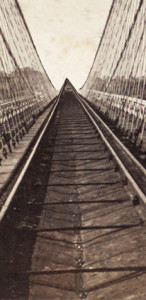 Before Einstein turned science on its head, people in Western culture tended to picture time as a single line which connected the beginning and end of all things. This is no longer the case, at least among scientists. The idea of linear time emerged from the early cultures of the Ancient Near East and was essential to Judaism’s understanding of reality. Judeo-Christian culture embraced linear time as its own, and structured history and reality accordingly. Wherever the Church—and later Western culture—extended its influence through colonialism and conversion, linear time was a non-negotiable part of the package.
Before Einstein turned science on its head, people in Western culture tended to picture time as a single line which connected the beginning and end of all things. This is no longer the case, at least among scientists. The idea of linear time emerged from the early cultures of the Ancient Near East and was essential to Judaism’s understanding of reality. Judeo-Christian culture embraced linear time as its own, and structured history and reality accordingly. Wherever the Church—and later Western culture—extended its influence through colonialism and conversion, linear time was a non-negotiable part of the package.
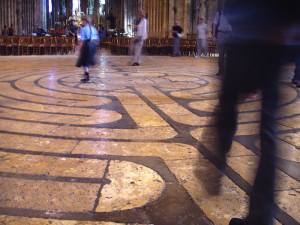
Chartres Labyrinth, photo by Maksim
But many cultures prior to Judeo-Christian contact tended toward circular or spiraling ideas of time. These ideas took various forms, from the cyclical rebirth of the entire universe to models more directly reflecting the turning seasons and skies. Cycles of death and rebirth were generally part of these worldviews, but for those of us firmly planted in a linear model of time appreciating these other models can be difficult.
Oddly enough, I can offer an example of time as a circle/spiral from my own experience. I’ve always thought in images. So if I thought of time, I pictured it, just as I did everything else. For as long as I can remember, at least back into my elementary school years, whenever I’ve tried to recall memories in sequential order, I’ve imagined years as circles in an ascending counterclockwise spiral. Winter begins each new circle at the top, moving into spring on the left, summer at the bottom side, and fall on the right, all rising toward a new winter and a new circle on the upward spiral. The spiral’s circles are formed of rather misty mosaics of memory-images from the seasons and events of the year. I offer this example simply to suggest that if a thoroughly Western child of elementary-school years could spontaneously create such a circular model—one that persists on into adulthood alongside a standard linear model of time—then cyclical time might not be all that alien to any of us.
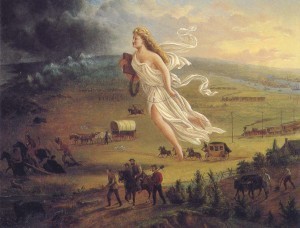
“American Progress,” John Gast, 1872
Linear time as the Church concretized it in Christian doctrine defined history as the stage upon which God acted to lead Creation to its divinely ordained conclusion–thus contributing, if indirectly, to the Western idea of progress. Also moving onto the stage at some point was the idea of a divinely chosen people whose own culture set the standard for all other peoples. By the 19th C, Western culture was producing theories of cultural evolution with “primitives” on the bottom and privileged Western society on the top. Immeasurable pain and violence were inflicted on other cultures as a result, and the damage is ongoing today. Although most reputable scholars rejected such ideas of cultural evolution by the mid-20th C, similar notions do still linger in the popular mind. Almost any person raised within a Western worldview is, at the very least, a carrier of embryonic presuppositions regarding progress and “primitivism,” whether they wish to carry them or not. It’s in the air, in our mothers’ milk.
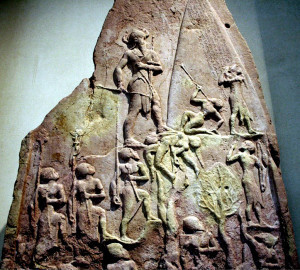
Akkadian victory stele, 2250 BCE
So what does all this have to do with my journeys through ancient art? Well, I found myself asking, “Why do cultures change?” When Stone Age humans began domesticating animals, was it “development,” “progress,” or simply change based on circumstances we can’t see clearly today? Cultural change that led to dynastic civilizations and large-scale warfare can only be called progress (with any certainty) if where we stand today is the intended and best possible result in an overall plan of history. When Neolithic groups moved toward urbanization and the beginnings of metallurgy, was it progress, or simply change? What other paths existed in prehistory as possibilities—what waves had not yet collapsed? In Western Asia and Eastern Europe cultures adhering to traditional ways disappeared—or were wiped out by the widespread wars, plagues, and famines of the last half of the Bronze Age. And here a possibility began to grow in my mind.
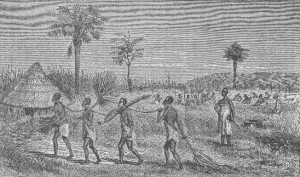 I considered the course of events in recent centuries when Traditional, or Earth-based, cultures encountered Western civilization. One thing I had never considered before now demanded my full attention: African Traditional peoples, Native Americans, South Sea Islanders, Aborigines—these peoples did not progress, or develop, or evolve—their cultures were annihilated. They were not in the process of change when first contact was made. Change was not offered to them as an option. Whether they were killed with weapons, pestilence, starvation, or all three together, their cultures were extinguished. Greed for land and resources, brutally efficient weaponry with the sense of power born of it, and the tantalizing possibility of “might makes right”—these human factors undergirded the conquest of “new worlds.” Would it be unreasonable to suppose that these same human factors sealed the fate of indigenous peoples whose lands adjoined the Fertile Crescent and the civilization it cradled?
I considered the course of events in recent centuries when Traditional, or Earth-based, cultures encountered Western civilization. One thing I had never considered before now demanded my full attention: African Traditional peoples, Native Americans, South Sea Islanders, Aborigines—these peoples did not progress, or develop, or evolve—their cultures were annihilated. They were not in the process of change when first contact was made. Change was not offered to them as an option. Whether they were killed with weapons, pestilence, starvation, or all three together, their cultures were extinguished. Greed for land and resources, brutally efficient weaponry with the sense of power born of it, and the tantalizing possibility of “might makes right”—these human factors undergirded the conquest of “new worlds.” Would it be unreasonable to suppose that these same human factors sealed the fate of indigenous peoples whose lands adjoined the Fertile Crescent and the civilization it cradled?
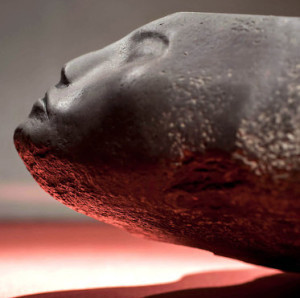
Bound Captive, Early Dynastic, Egypt
This line of thought led to disturbing questions often debated among academics—but for me, these questions have become personal. What is progress? Does it really exist? Why is change a good thing, if an existing situation is good already? Is it possible that unlovely traits like greed, abusive power, and fear have always been the most common motive forces in human change?

Movie “Avatar,” idealized indigenous people
Now that the Western world is beginning to perceive the number and variety of plagues spawned in its long shadow, some people have begun to look with yearning and regret at Earth’s remaining Indigenous peoples. Unfortunately, when we look we tend to see through the lenses of our own worldview, darkly. We do not see these fellow-humans as people who belong to themselves, with their own lives and concerns, but as solutions to our problems, romanticized projections of our notions of a paradisal age.
Perhaps wisdom remains for the healing of the Earth. Perhaps sustainability is something we can learn. Perhaps if we ask with respect, elders may share their wisdom. But first we of Western culture need to look to our own house.
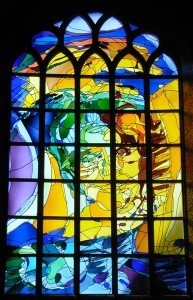
Stained glass window “Jairus’ daughter” by Annemiek Punt, photo
Beckstet
Professor and historian E. Glenn Hinson first introduced me to the thought of Teilhard de Chardin, a French priest and philosopher of the first half of the 20th century whose reflections on God and history led to repeated censures by the Catholic Church. But the one piece of his thought that burst into my world like a supernova was his assertion that God has given the future of the Earth into human hands: if we don’t take responsibility for our world, God won’t step in with an exasperated sigh and clean up the mess. In the Apostle Paul’s words, we must work out our own salvation with fear and trembling (Phil 2:12). “Progress” does not necessarily reflect God’s will, nor does God necessarily “will” what is happening in our world today. Christ has pointed the way in love, and the Holy Spirit strengthens us as we labor, but if we don’t work for the salvation of all God’s creation, humanity’s end times may be grim indeed.
.
.




